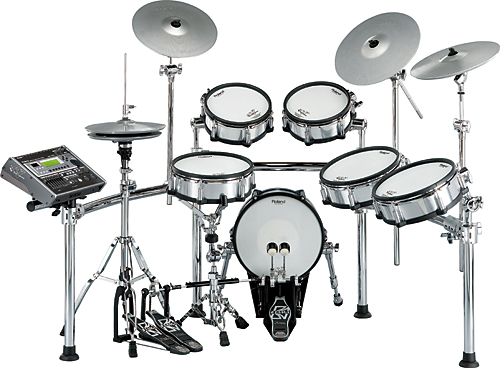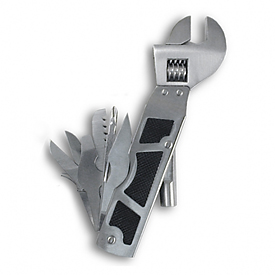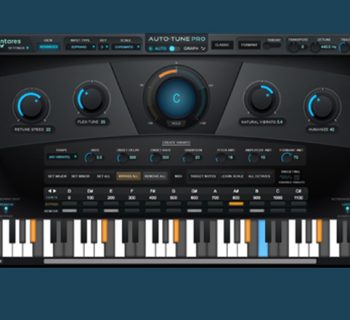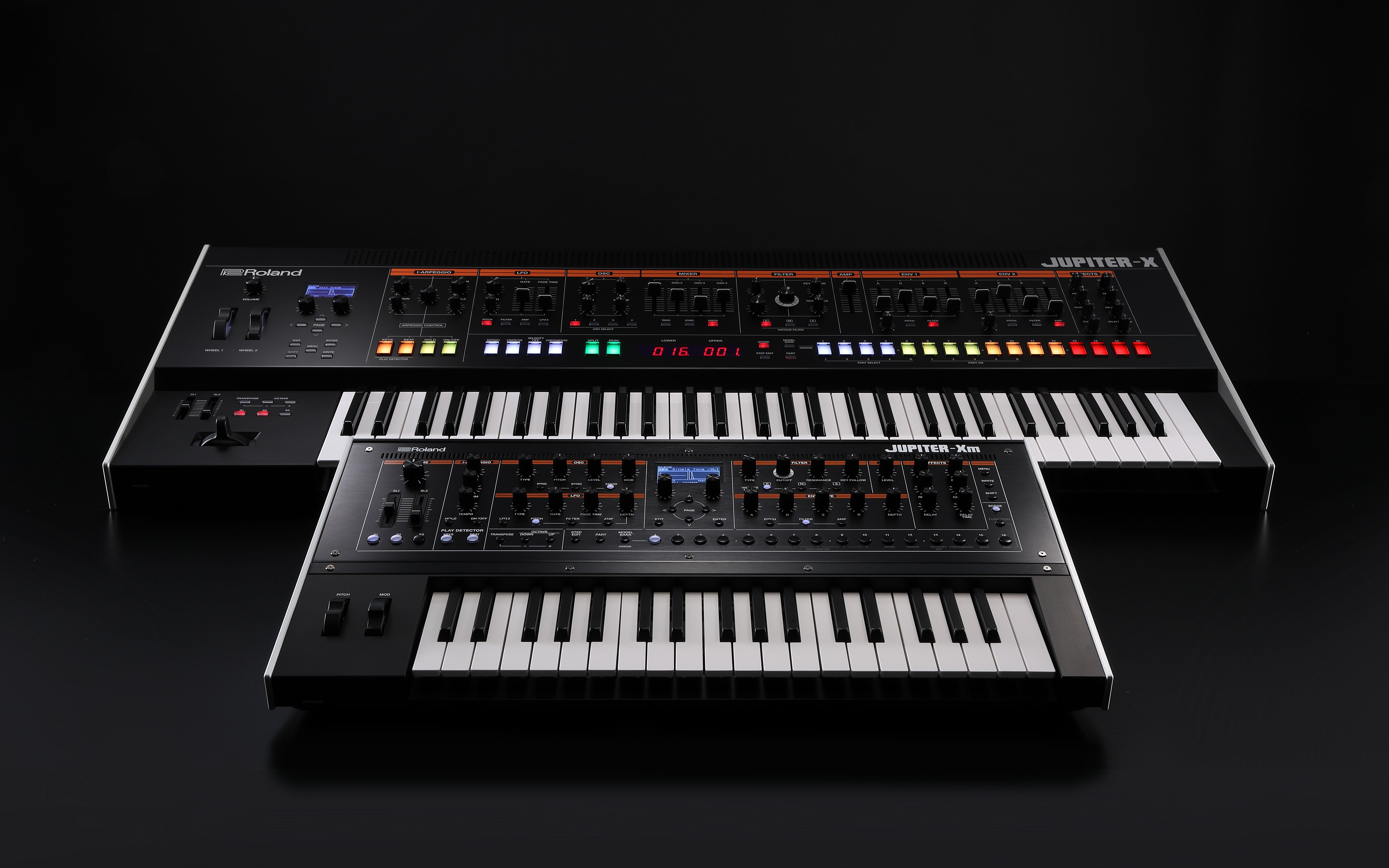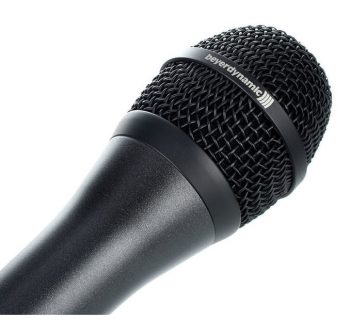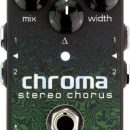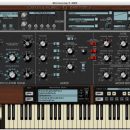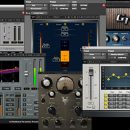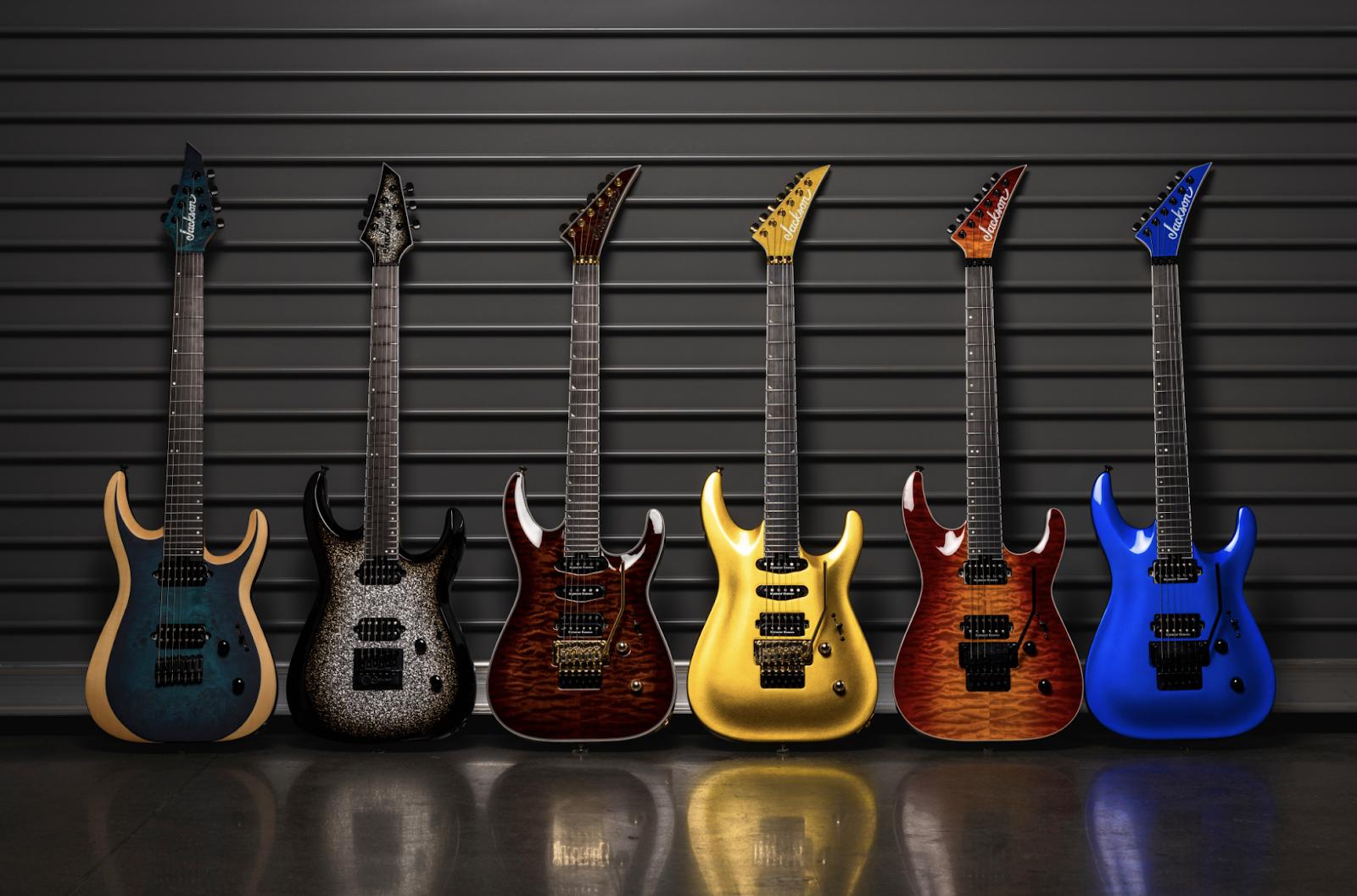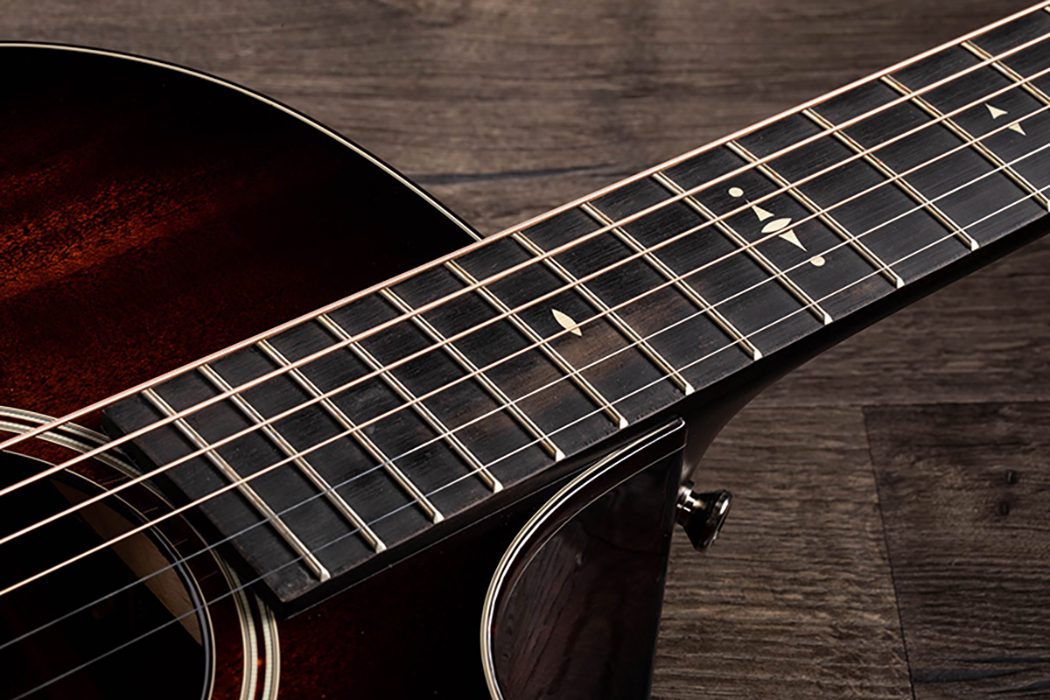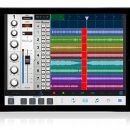Much of our modern lives seem to depend more and more on computer-based technology. From mp3s instead of CDs, music videos on Youtube instead of television, online shopping for anything from the holidays to a pizza, iPhones, and Macs, we are attracted to the benefits of convenience. The drum industry has followed this evolution.
| Category | Value | Rating |
| Features | 20% | |
| Usability | 25% | |
| Sound | 25% | |
| Documentation & Support | 10% | |
| Price | 20% | |
| OVERALL RATING = 3.5 3.6 stars or better: Outstanding, WIHO Award 3 stars or better: Worth considering 2 stars or better: Suited to specific needs 1 star or less: Not recommended |
||
Though no one really refers to it this way anymore, the drum set was originally known as the “trap set,” short for contraption. When analyzing classic photos of these set-ups, we see a number of things from woodblocks, triangles and other percussion instruments that ornamented around the kick and snare. Going through the years, drummers like John Bonham and Neil Peart started to incorporate more exotic instruments like timpani, gongs, congas, wind chimes, cowbells, etc into their kits. The desired pallet of sounds would become bigger and bigger with a simultaneous need to consolidate space. Thus, the need for something like an electronic kit came about and really was its own separate “thing.”
However, just as with much of the entire technology industry, companies looked to compete and in essence, supplement and improve on older, more classic versions of the drum kit. While the debate over electronic versus acoustic drums has gone on for many years, the following review begs the question whether Roland’s TD-20SX could actually compete with the sound, feel and options provided by an acoustic kit while still maintaining sound options and advantages of its own.
With its sturdy hardware, highly realistic feel, and seemingly endless sound banks with customizable options too numerous to mention, Roland’s flagship kit is the industry’s furthest reaching electronic drum kit, and it’s pretty sweet. If money were no object, we would certainly have one in our studio.
Features
In order to talk about the TD-20SX kit, we’ll explore the components in separate functional areas: the pads and cymbals, the TD-20X drum module, and the hardware:
V-Drums Pads and Cymbals
In the box we received, Roland’s new kit included six drum pad triggers and five cymbal triggers. With the drums, we received one 14” KD-140SV kick drum pad (it was actually 20” tall), one 12” PD-125XS snare drum pad, two 10” PD-105X tom pads, and two 12” PD-125X floor tom pads. All pads come equipped with Roland’s familiar two-ply mesh head (manufactured by Remo) and the head tension can be adjusted with a drum key, which, it should be noted, only affects feel and not tone.
 This time around, the company has outfitted all of the shells with a silver brush metallic finish, though removable with a Philips screwdriver and replaceable with a metallic blue, red, or specific consumer-desired wrap.
This time around, the company has outfitted all of the shells with a silver brush metallic finish, though removable with a Philips screwdriver and replaceable with a metallic blue, red, or specific consumer-desired wrap.
With the exception of the kick drum, each pad’s rim and head are independent, velocity-sensitive triggers that can call upon multiple samples based on the velocity of your stoke (more on this in conjunction with the brain). A significant upgrade with Roland’s latest pads has to do with the size of the pads compared to previous Roland models, especially the kick drum. The feel of the kick drumhead is also very different, as its spongy texture allows for the beater ball to be buried.
 The included cymbals comprise of one two-piece set of 12” VH-12-SV hi-hats, two 14” CY-14C-SV crashes, and one 15” CY- 15R-SV ride. Each of the rubber-coated cymbals is now provided in a silver, semi-sparkle finish so as to better reflect light on stage. The hi-hats are designed to respond to both bow and edge playing, as well as foot splashing. They are also pressure sensitive via the hi-hat pedal so as to replicate the playability of an acoustic hi-hat. This is a significant difference in design as it has been the industry standard up until this point to have just two hi-hat sounds (open or closed). Each crash cymbal and the ride are also responsive to both bow and edge playing. However, a new feature in the ride cymbal is the ability to use the bell as an independent trigger, thus equaling three sound sources from one pad. Both crashes and the ride cymbal are also choke-able.
The included cymbals comprise of one two-piece set of 12” VH-12-SV hi-hats, two 14” CY-14C-SV crashes, and one 15” CY- 15R-SV ride. Each of the rubber-coated cymbals is now provided in a silver, semi-sparkle finish so as to better reflect light on stage. The hi-hats are designed to respond to both bow and edge playing, as well as foot splashing. They are also pressure sensitive via the hi-hat pedal so as to replicate the playability of an acoustic hi-hat. This is a significant difference in design as it has been the industry standard up until this point to have just two hi-hat sounds (open or closed). Each crash cymbal and the ride are also responsive to both bow and edge playing. However, a new feature in the ride cymbal is the ability to use the bell as an independent trigger, thus equaling three sound sources from one pad. Both crashes and the ride cymbal are also choke-able.
TD-20X Drum Module
The flagship Roland V-Drums brain houses 100 preset kits that are customizable, 50 of which are brand new to this specific model. Containing 920 independent sounds, the module also allows for the creation of user kits that can be built from the ground up. On its face is a mixer with individual faders for each pad/sound source as well as a sectioned area for sequencer management and instruments/effects modifications. The onboard sequencer allows for the creation, editing, and triggering of patterns.
 Also included in the factory programming are a number of premade sequences or loops that span time signature and genre for practice. The effects processors allow for customizing effects such as reverb, delay, flanger, phaser, chorus, pitch shift, distortion, lo-fi, etc. Scrolling through the module’s menus is done via a cursor for more elaborate sections and through the choice of either a dial or Up/Down buttons.
Also included in the factory programming are a number of premade sequences or loops that span time signature and genre for practice. The effects processors allow for customizing effects such as reverb, delay, flanger, phaser, chorus, pitch shift, distortion, lo-fi, etc. Scrolling through the module’s menus is done via a cursor for more elaborate sections and through the choice of either a dial or Up/Down buttons.
On the rear of the machine, there are eight individual direct channel outputs, as well as stereo outs, making the V-Drum sounds easily usable both in multitrack recording as well as for live performance. The module allows for adding additional triggers to the kit, and can be used in conjunction with external music devices like an iPod. With plenty of MIDI capabilities, you can easily integrate the V-Drums into a larger system with external sound sources from samplers, keyboard workstations, and DAWs.
 In reality, the amount of customizable sound options included in the TD-20’s module is rather vast — far too many to completely list here, but sticking with the implied theme of comparison to “real drums” (acoustic vs. electric), we wanted to pay specific attention to the seemingly user friendly nature of this drum kit and see how well it benefits the studio or recording drummer. Included in the settings is the ability to add rim sound to varying degrees across the pads, but with particular attention to the snare.
In reality, the amount of customizable sound options included in the TD-20’s module is rather vast — far too many to completely list here, but sticking with the implied theme of comparison to “real drums” (acoustic vs. electric), we wanted to pay specific attention to the seemingly user friendly nature of this drum kit and see how well it benefits the studio or recording drummer. Included in the settings is the ability to add rim sound to varying degrees across the pads, but with particular attention to the snare.
Regarding the snare, you can choose shell type, depth of drum, snare strainer tensioning, varying degrees of inside/outside mic positioning, different degrees of muffling with different materials, head type, and head tuning. Most of these settings apply to the toms, too, with few exceptions.
With the bass drum, we were able to adjust kit resonance (how much the kit vibrates with the kick, as is typically the case with real kits), beater type, the amount of sympathetic vibration, etc. Couple this with customization of room ambiance (room size, room shape, wall type, mic positioning) and you start to see just how detailed you can get.
The metronome/click is customizable for time signature, sound and subdivision. 
V-Drums Hardware
The centerpiece of the TD 20’s hardware package is the MDS-25 rack system, which is comprised of three main segments made of aluminum. All cabling is threaded through the rack’s piping and housed in a transparent plastic conduit. The cabling is color-coded (and matches the kit’s finish), and labeled at its ends by corresponding trigger or instrument.
Also included are three cymbals arms and four tom mounting systems, each of which has a ball joint design and include rubber memory locks. Each of the cymbal arms can be used as a straight or boom stand very reminiscent of the hardware from companies like Drum Workshop. Each of the tom pads also houses a dual tom mount. By this, we mean that a drummer is capable of choosing to either use the ball joint or other types of tube-based mounts (vertical or horizontal), similar to Pearl’s tom mounting hardware. For those who choose to use the rack tom stands as auxiliary cymbal stands, the slots are designed to accommodate this too. It’s a very flexible system for configuring the drum kit to your specific needs. Also included are five metal clamps.
Note: A drum throne, kick drum pedal, snare drum stand, and hi hat stand are not included in the TD-20SX hardware package.
Usability
Despite the large size of this package, the setup of the kit was fairly simple, especially when it came to the cabling since all of the wirings were color-coded, labeled, and threaded through the hardware. This first step is usually a nightmare and in many ways is one of the big turn-offs when it comes to dealing with electronic instruments. Roland has taken note of that concern and designed the hardware mindful of it. Though the hardware required a little bit of time to get everything arranged to our particular taste, by comparison to other rackmount systems, we were up and running before we knew it. This is evident considering the fact that a lot of the included hardware seemed to be modeled after some of the best and most recent advances in acoustic drum hardware.
When dealing with what could be considered the “software” side of the package, we found the interface of the TD-20X to be very easy to navigate as we tried to figure out and explore as much of the module as possible without having to rely on the manual. We learned things on our own rather quickly, and this ease in discerning the controls of the module made it much more fun to play since we could spend more time acting on preferences and less time trying to find out how things worked. The arrangement of controls on the module’s face was very clear and user-friendly, with various functions on the screen easily corresponding to logically placed, physical buttons.
The snare and toms felt great to play, especially with the larger surface area of these pads, but the kick really took things to another level, really making us feel at home behind the kit. For so long, electronic kick pads have been very cumbersome as they typically move around obnoxiously and never seem to replicate the solid feel of an acoustic bass drum. Upon setting the V-Drum kit up and beginning to play, this difference was one of the first things we noticed.
However, we must say that we found the weight of the kick almost too much. Especially considering its size and weight, you probably wouldn’t want to transport it in the same gig bag as the other pads. One other thing we found with the kick drum is that we felt that there might have been a slight compromise in the sensitivity of the pad based on the new feel. We mention this because past a certain decrease in velocity, we could not trigger a sound. On the other hand, with the V-Drum snare and tom triggers, even the slighted grace notes were picked up.
With regards to the cymbals, the hi-hat set was the star of the show for us. With the pads being pressure sensitive to varying degrees of tightness and response to things like splash heel techniques, we were extremely impressed. This is arguably the best hi-hat trigger on the market. The crashes worked really well, though we wished that the responsiveness of the edge was not limited to a particular location and surrounded the entire pad, thus making for more lifelike playability. Our biggest issue resided with the ride trigger, more specifically with the bell feature. While we did feel that we got a separate sound from the portion of the pad, it just did not seem like that much of a difference and when we did feel that it was, we were striking the bell with what we felt was an unnecessary amount of effort to obtain the sound we were getting.
The hardware and clamps included were sturdy, not too heavy, and allowed for our experience with the Roland kit to be very pleasing and comfortable.
Using the sequencer was a real blast not only for its ease but its seemingly infinite possibilities. With 150 preset patterns (full of the richest sounding sequences we’ve heard on an electronic kit) and 100 user pattern files, the Roland TD-20 SX far more receptive to your musical ideas than your guitar player. Possessing the ability to easily program your own melody and bass lines, two separate backing tracks, a percussion track and drum track — not to mention access to things like tone, special effects, and panning, we were sucked in for hours playing with ourselves, err… exploring song creation, that is.
As per the Start and Stop keys provided on the TD20-X’s face, any pattern can be initiated or paused at any point. If and when you hit the Stop key again once a pattern is stopped, the pattern resets itself to play from the beginning.
From the tempo screen (easily and directly accessible from the buttons listed under "sequence") we were able to enable/disable a blinking light visual metronome that coordinated itself with the designated tempo. We were happy to note that click-track volume had its own fader on the mixing board — essential for no-fuss operation when playing live to accompanying percussion tracks and sequences.
Sound
It has unfortunately been all too often that most electronic drum kits really don’t sound like big drum kits, but more like small toys. They usually have this sort of perfectly stiff, sterilized sound that completely sucks the life out of a track. As a matter of fact, it has come to our recent attention that people frequently see the difference between a track being a “demo” or a finished product based on the quality of a song’s drum sounds! Thus, it is all the more important that something like the TD-20X not only have a vast library of sounds but a quality library of sounds. Through the use of in-ear monitors, we explored the voices in detail and were pleasantly surprised to see that Roland has set a new standard in sampled drum sounds.
Many of the module’s preset drum kits have a lot of great qualities. The “TD-20X” kit features a set of stacked cymbals on the secondary crash, which have a great attack with just the right amount of sizzle to give the effect even more life. China sounds on a few of the kits are sharp and yet have a nice trashy decay that honestly could fool you if you closed your eyes. Staying on the topic of cymbals, the presets “Lite” and “Ballad” had some of the nicer cymbal sounds with the former possessing a brighter and the later more dark tones. Also included are riveted cymbals, which have a very reasonable amount of decay.
Moving on to snare drum sounds, of which this module has many great ones, the “Orchestral Percussion” kit sounded particularly fantastic. The snare drum sound is dry with a tight sensitive snare response but has that concert snare drum sound that has just the right amount of reverb naturally from a large hall. The kit also includes horn samples triggered by the rims of the toms that sound rich and authentic. Back to snares, the “’90s Power” kit has a really low, fat snare drum sound that has a tasteful amount of reverb when hit with a rim shot. When played in just the center of the head, there is a sharper, more staccato sound. “Mellow” has a fantastic low snare drum sound that is very similar to the snare sound heard on “Rock With You” by Michael Jackson, featuring John JR Robinson on drums, or Steve Jordon’s snare sound found on the John Mayer track, “Vultures.” This vintage sound is really all the craze amongst rock drummers these days with its really low tuning and loose snare slap more than pop. Also worthy of mentioning here are the multiple rim sounds on this kit. With a lighter hit you get a cross stick sound whereas on a harder one you get a rim shot that is very dry, but still super sharp.
Moving on to the toms, and staying on the aforementioned preset, “Mellow,” the tom response is extremely lifelike. When played softer, he heard more resonance in the tone. However, when hit harder, the toms took on more attack. “’70s Record” has a nice overall sound with toms that have a pitch bend and lower tuning. “Wet Booth,” “Vintage Rock,” and “Arena” all have very open tom sounds that have a mid to low tuning range similar to the tuning scheme we prefer on an acoustic kit. “Pop Reggae” goes a step further and adds a rim shot sound on the timbale sample programmed on tom 1, if and when you use the rim.
If you haven’t noticed by now, the goal of Roland’s flagship drum brain is to strive for realism, and the engineers did a great job achieving this. On “Studio,” there is discernable synthetic vibration when playing the toms softly, and it is replaced by more attack as you hit harder. “Malleted” is a kit recorded where the entire rig is played with mallets. This really goes to show that Roland is really trying to rule out the things that the V-Drums haven’t covered. The tones in this preset are soft and really warm.
Another example of attention to detail lies in the preset “Groove” which has pitched rim sounds, and while it doesn’t seem like much, this subtle detail is a desired sound that could have been overlooked.
Then, there was the “Brushes” kit, which blew us away. While it is a little clippy, the concept is amazing. Drummers are now capable of replicating a brush sweep with a stick tips sweep. If you choose to hit the pad, you can get different amounts of attack based on your velocity. This is aside from the fact that any kit can be set to sound as if brushes are being used to play it. If there were one “realistic” feature that we questioned, it resided in the jazz kits that were marketed on YouTube as to having an open and closed tone on the kick drum based on the way it was played. For us, it seemed as if it were just a difference in volume rather than tone.
Aside from all of this acoustic drum emulation that the kit is doing so well, we should also discuss some of the more exotic settings featured in the brain. Presets like “Cashmirror” and “Zeppy” both are very reminiscent of the classic Bonham sound. The first is of particular note, as it periodically cycles through the same filtered sound that happens on the classic recording bearing a similar name. The later has an open but punchy sound on the kit — especially the kick drum, as if you were playing a felt beater on a kick drum muffled with a felt strip. Also of special note are kits like “Cosmic,” “Flanger,” “Neotype,” and “Melodious,” which have cymbals and drums set up to trigger things like chords and single notes and so you can essentially play your own “hits.” Since the chords have such a nice decay, it seems as if there is a vamp going on as you play around it.
Documentation and Product Support
The included documents for set up and use of the module were very neatly laid out and easy to understand. As is standard with Roland, their instructional manuals are well made, even down to the diagram for the setting the rack, which we found to be very helpful. If we did not know where something was, we simply went to the index and found it. It’s very comforting to know that with something a bit more complex than your standard acoustic drum kit, real, usable documentation is provided.
Price
The Roland TD-20SX (MSRP $8,269) sells for approximately $7,000 street. This is obviously a very expensive piece of gear, and not something that you would likely purchase impulsively. If you’re on a limited budget, or just need a convenient practice tool, Roland has vastly more affordable V-Drums products that can serve those purposes. However, if you are pro drummer who is looking for the highest quality electronic instrument that will serve you well in the studio, on the concert stage, and in your apartment, you can’t go wrong with this setup. This is the electronic drumkit to beat.
Contact Information
Roland Corp.
www.rolandus.com
| Evaluation Short-List |
|

